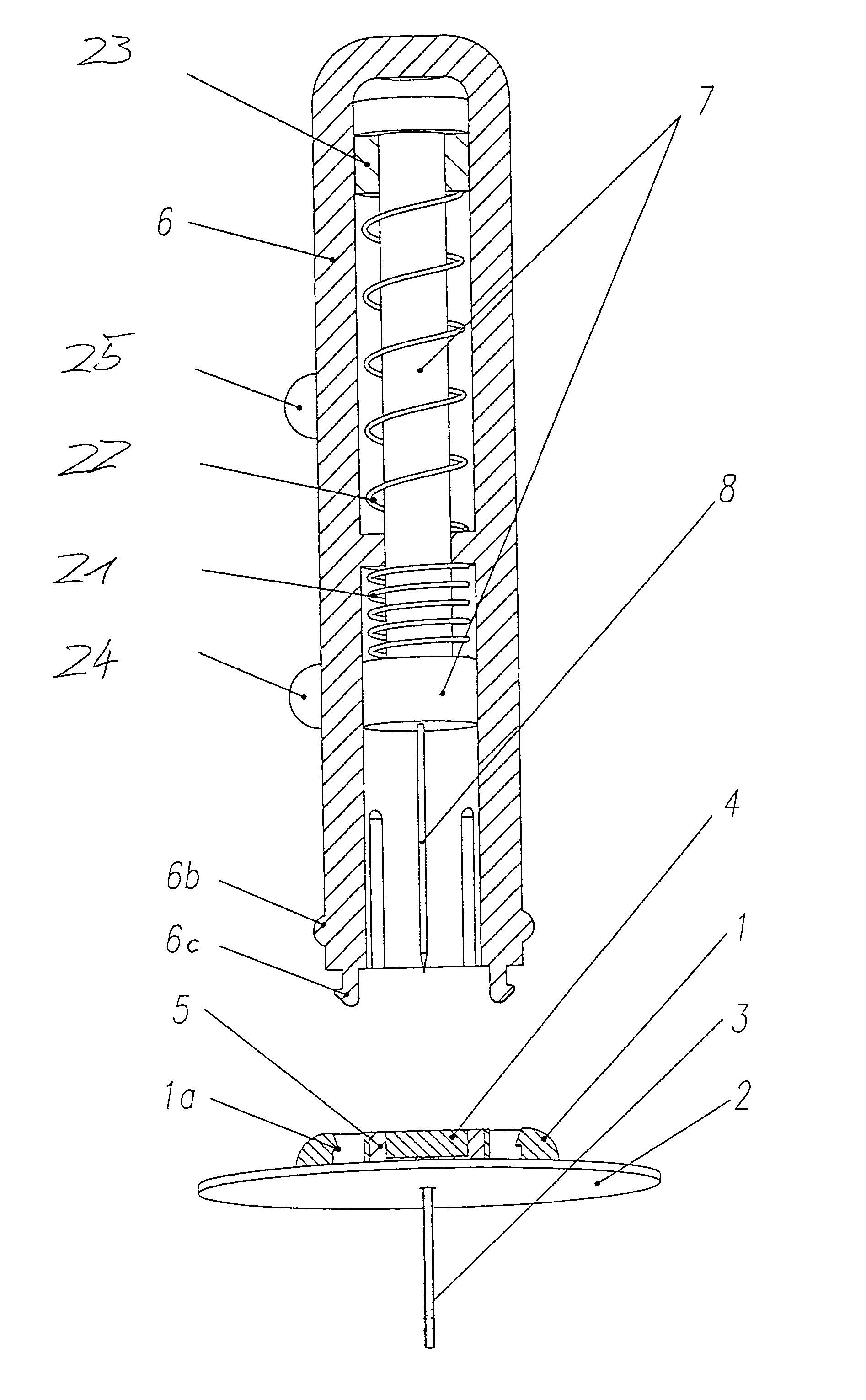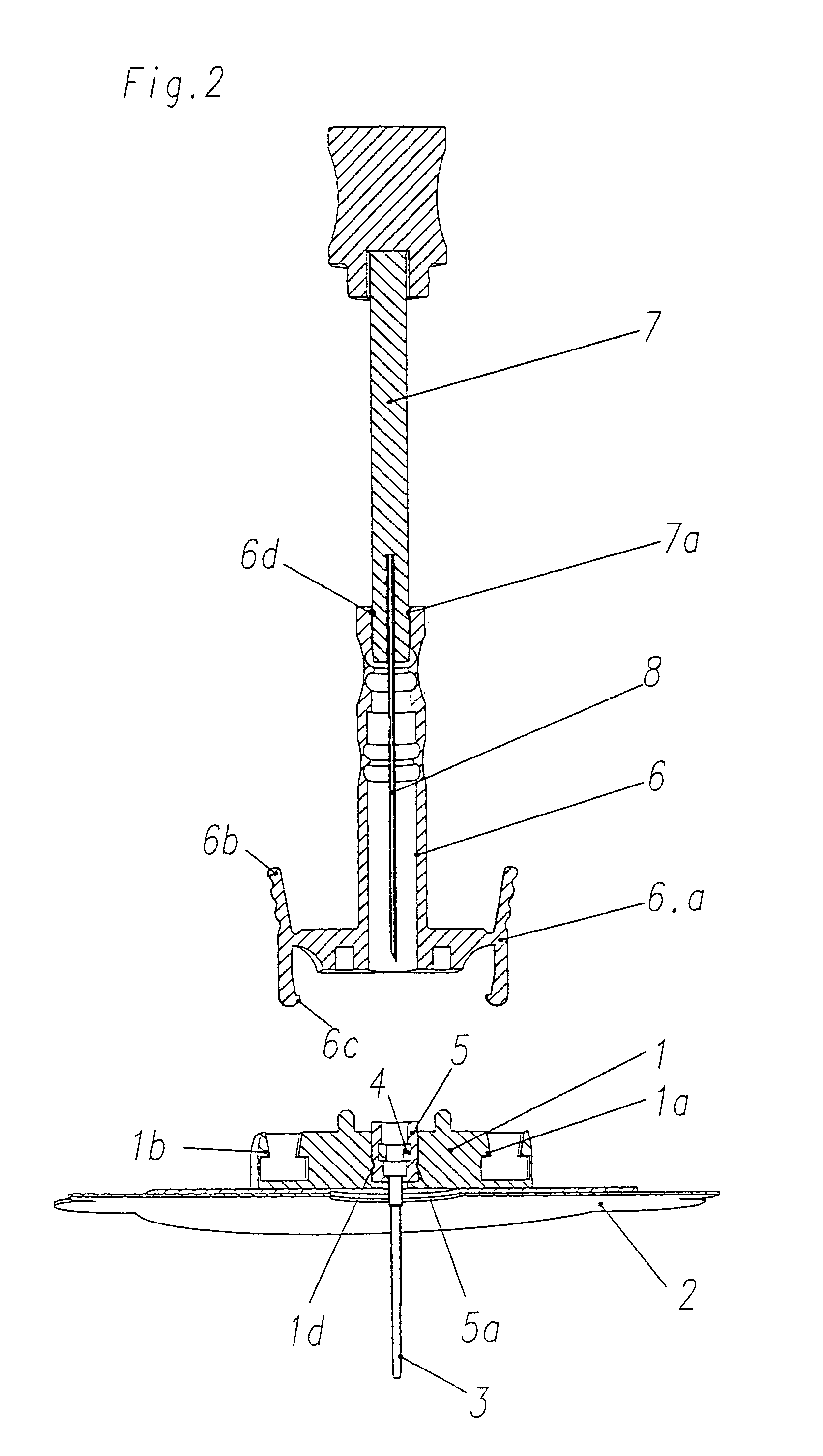Infusion set
a technology of infusion set and infusion needle, which is applied in the direction of infusion needle, other medical devices, catheters, etc., can solve the problems of inability to properly protect the cannula, the injection process is often unpleasant for users, and the inability to accurately use the device, so as to reduce the danger of users incorrectly using the devi
- Summary
- Abstract
- Description
- Claims
- Application Information
AI Technical Summary
Benefits of technology
Problems solved by technology
Method used
Image
Examples
first embodiment
[0081]FIG. 13 shows an automatic cannula inserting and restoring device, in its initial state before a cannula 3 on a cannula sub-assembly 35 has been inserted using a guiding needle 8. The cannula inserting device comprises a connector sleeve or guiding element 38 which has connector elements 39 at its lower end, in order for example to be fastened on a foundation or base body 1, as shown for one of the embodiments in the figures above. Said connector elements 39 for connecting the connector sleeve 38 to a predetermined base body comprise for example latching tongues 39a and other connecting elements (not shown). Within the connector sleeve 38, the guiding sleeve 33 is provided with tongues 33a, 33b and 33c protruding inwards from it. The tongues 33a to 33c are arranged at various positions in the axial direction of the guiding sleeve 33 and can be arranged as individual protruding elements or also over a large part of the circumference of the guiding sleeve 33. The tongues can als...
second embodiment
[0086]FIG. 16 shows an automatic cannula inserting and restoring device in its initial state, comprising a connector sleeve 38 which is connected to a foundation body 1. A triggering button 37 passes into the triggering sleeve 37a arranged within the connector sleeve 38. The triggering sleeve 37a recesses and lower and upper chamfers on the inner side along its axial direction, using which a lower and an upper slaving ring 32a and 32b can be uncoupled when the triggering sleeve 37a is shifted axially, in order to expel the guiding needle 8, together with the cannula 3 arranged around it and the corresponding cannula sub-assembly 35, out of the connector sleeve 38 and to then retract the guiding needle 8 out of the cannula 3 and the cannula sub-assembly 35, as will be described below.
[0087]The lower slaving ring 32a abuts a stopper sleeve 36 and is held in position by the stopper sleeve 36 against the pressure of the spring 31. The spring 31 presses on the upper side against the uppe...
PUM
 Login to View More
Login to View More Abstract
Description
Claims
Application Information
 Login to View More
Login to View More - R&D
- Intellectual Property
- Life Sciences
- Materials
- Tech Scout
- Unparalleled Data Quality
- Higher Quality Content
- 60% Fewer Hallucinations
Browse by: Latest US Patents, China's latest patents, Technical Efficacy Thesaurus, Application Domain, Technology Topic, Popular Technical Reports.
© 2025 PatSnap. All rights reserved.Legal|Privacy policy|Modern Slavery Act Transparency Statement|Sitemap|About US| Contact US: help@patsnap.com



